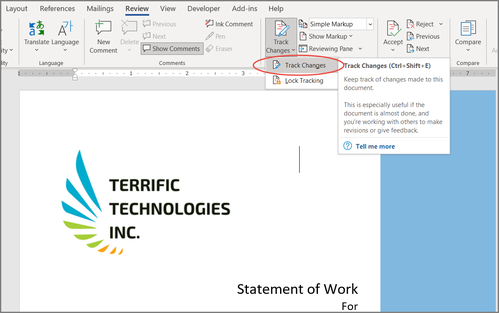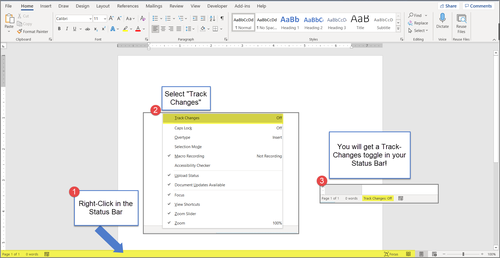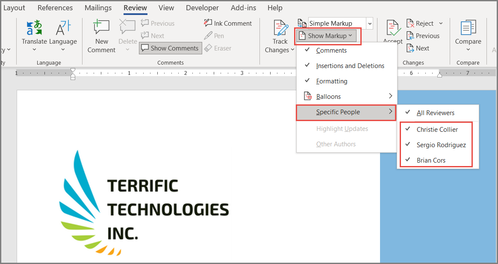Proven Pro-Tips for Eliminating Document Editing HELL
Editing a document as a team can feel a bit like “hell,” as demonstrated in my latest Sales Pro Tip, Eliminate Document Editing Hell. You need several other people to edit certain sections of the document. So, how do you manage all those edits without losing your mind?
When responding to an RFP, sales proposal, or statement of work, you are likely to have to rely on other members of your team to help add and edit content in the document. This article will demonstrate how to use Word’s Track Changes to track edits, deletions, and comments, reducing errors and helping your team get sales documents out the door faster.
When responding to an RFP, sales proposal, or statement of work, you are likely to have to rely on other members of your team to help add and edit content in the document. This article will demonstrate how to use Word’s Track Changes to track edits, deletions, and comments, reducing errors and helping your team get sales documents out the door faster.
Microsoft Word, Track Changes to the Rescue
Track Changes is a tool inside Microsoft Word that gives you and your coworkers a way to spot changes quickly. With Track Changes, all team members can edit the same document and Word will highlight what has been changed and by whom. Then during the final review those edits or “tracked changes” can be accepted or rejected. This keeps all of the changes in one place, eliminating the need for multiple versions that have to be cut/pasted back into a final version. When turned on, Track Changes makes it easy for reviewers to see which words, sentences, or sections within the document have been changed and by whom.
Track Changes works best when your company has a Microsoft Office 365 subscription and documents can be simultaneously edited out of Teams or SharePoint, but you can also edit the same Word document serially – one editor at a time – and email the document to subsequent editors. With Office 365, Track Changes works best when you open the documents in the desktop Word app.
Track Changes works best when your company has a Microsoft Office 365 subscription and documents can be simultaneously edited out of Teams or SharePoint, but you can also edit the same Word document serially – one editor at a time – and email the document to subsequent editors. With Office 365, Track Changes works best when you open the documents in the desktop Word app.
4 Easy Steps to Using Track Changes
1. In the desktop Word app, turn Track Changes on to track updates, edits, and comments.

Go to the Review tab and click the dropdown for Track Changes to turn it on. Now when edits are made to the document, Word will track those changes.
Extra Tip! Another nifty way to do this is to right-click in your Status Bar and choose Track Changes. This allows you to quickly toggle Track Changes on and off.
Extra Tip! Another nifty way to do this is to right-click in your Status Bar and choose Track Changes. This allows you to quickly toggle Track Changes on and off.

2. Decide which Track Changes view you want to use. This defines how you see the edits made in the document.

Track Changes provides four drop views to choose from:
- Simple Markup (recommended) is a minimized view of all changes. You will see a red line displayed on the left side of the document to indicate edits and changes (depending on your specific settings).
- All Markup shows all the changes that have been made without hiding or minimizing the edits in the view.
- No Markup shows all updates within the document without showing individual changes.
- The Original view is the original document without any changes.
3. Track edits by individual or group.

Control and view edits by an individual when you click Show Markup and then Specific People. You can select one or “All Reviewers”. This is an easy way to follow which edits have been made by individual.
4. Accept or reject changes before finalizing your document.

After all edits have been made, you can “accept” or “reject” the document changes. To do this, click the Accept button for a particular edit or Reject the change to discard the edit. If you know you want to accept all the changes, you can click the “Accept All Changes” dropdown from the Accept icon. It’s that easy!
REMINDER! Don’t forget to remove all Track Changes before sending a document to your customer.
Using Microsoft Word’s Track Changes can really make a huge difference when editing a document as a team. Try it out for yourself!
REMINDER! Don’t forget to remove all Track Changes before sending a document to your customer.
Using Microsoft Word’s Track Changes can really make a huge difference when editing a document as a team. Try it out for yourself!
If you want to take Track Changes to whole other level, consider an automated RFP and sales document response tool that’s integrated with Microsoft Word, like RFP Response Builder. This software allows you to quickly assign content to a reviewer and manage those assignments in a Dashboard. You also get one-click content inserts and a feature for final document reviews. Reduce the time and bottlenecks associated with complex projects like RFP responses and complex sales proposals – and increase your win rate. See RFP Response Builder in action.
Recent
SharePoint - Why you should be using it!
June 2nd, 2022
Paste Like a Pro in Microsoft Word
March 30th, 2022
Proven Pro-Tips for Eliminating Document Editing HELL
February 6th, 2022
6 Tips to Effectively Respond to an RFP
December 6th, 2021
4 Proven Ways to Improve the Quality of Your RFP Responses
December 3rd, 2021
Archive
2022
2021
October
November


No Comments